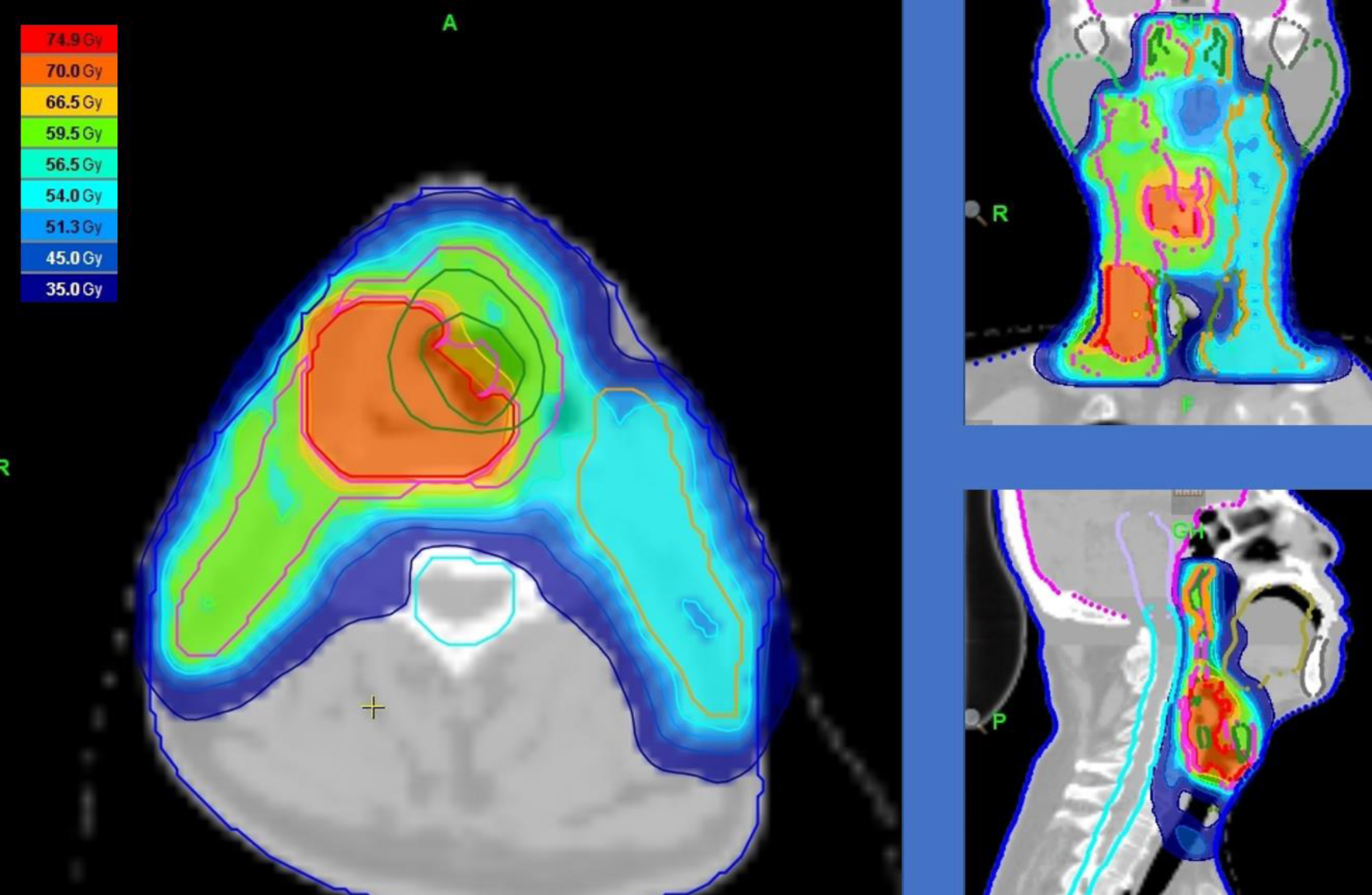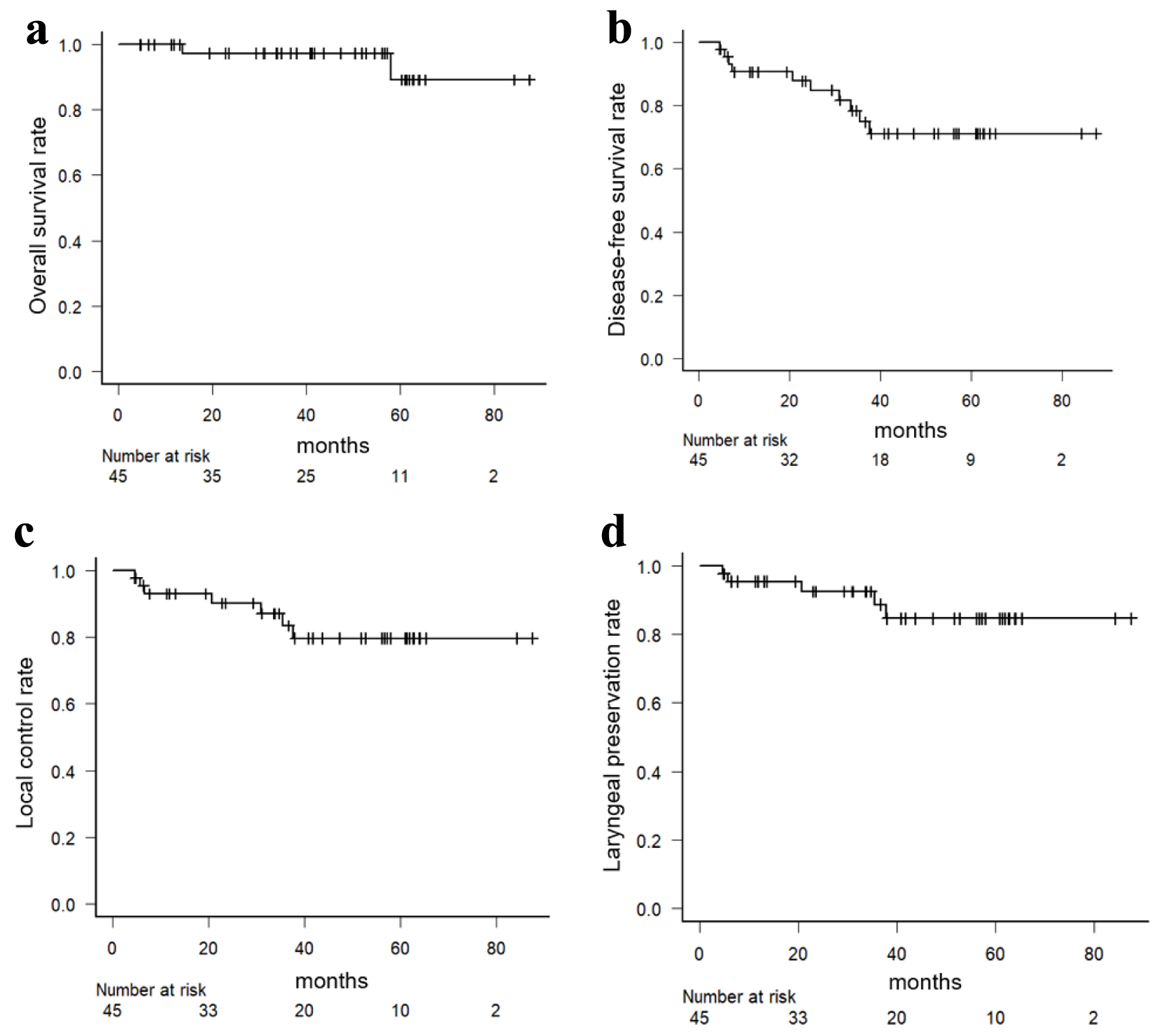
Figure 1. Treatment plan of helical tomotherapy: the primary and positive lymph node covered by a dose of 70 Gy. The prophylactic lymph node levels of the ipsilateral side of the lymph node-positive side (right side) are covered by 59.4 Gy. The contralateral side of the positive lymph node (left side) is covered by 54 Gy.
